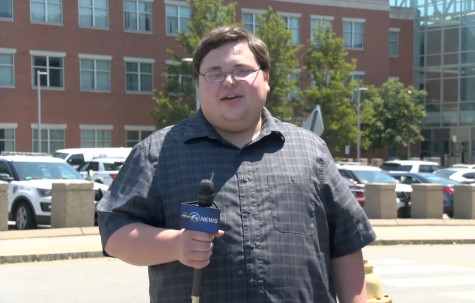Update on COVID-19 self-reported cases
This is the first semester at RWU where self-reporting has been the primary method of reporting positive COVID-19 cases

Vice President of Student Life Dr. John King
Through the first four semesters at RWU following the pandemic, the primary method of identifying COVID-19 cases within the RWU community was through testing at the university. The Fall 2022 semester changed that and instead of regular testing at the university, self-reporting through the online Etrieve forms emailed weekly.
That change was made as COVID numbers have continued to drop in the region, and new vaccines and boosters have been made to provide people with immunity to newer variants of the virus.
Some people at RWU then would only test themselves if symptomatic and then potentially those who are asymptomatic and have COVID would not test since they don’t have reason two and in turn those cases would not be self reported which Vice President for Student Life Dr. John King acknowledged.
“The number of COVID positives in our population is most likely higher because some people do not have symptoms and do not test, but that’s true in every community, every school, every state,” said King.
In regards to what the self report numbers looked like, here’s the breakdown from the numbers King provided:
During early check in and regular check in (from Aug. 13 to Aug. 31) there were a total of 58 positive cases for students.
Cases for the semester reached their peak two weeks later at 90 total cases from Sept. 5 to Sept. 11.
Ten cases was the low point which were reported from Sept. 26 to Oct. 2.
In the last two weeks cases among students have stayed relatively low in relation to the data. There were 13 cases from Oct. 3 to Oct. 9 and 20 cases Oct. 10 to Oct. 13.
King said for faculty and staff during the month of September, there were a total of 35 cases and through the first half of October there were only six reported cases.
King said RWU plans to continue with the current COVID guidelines and procedures it has in place, which are reviewed based on current conditions, but by and large likely will not drastically change.
“That doesn’t mean individuals should let their guard down in terms of maintaining their full vaccination schedule, getting boosters and taking precautions in crowded places,” said King. “It doesn’t mean that people should just think it’s [COVID-19] is gone because by these numbers, it’s not gone and it’s not going anywhere soon.”
With Thanksgiving break just over a month away, King offered a recommendation.
“As we approach Thanksgiving and the return from Thanksgiving, it’s going to be very important that individual students come back to campus with some self tests, that they test before they leave to come back to campus and they test later in the first week back,” said King. “We anticipate that that is a time where many of our community members, students, faculty and staff will be exposed to COVID.”

Jimmy Sadowski is a journalist with experience in print, multimedia, and broadcast journalism. Sadowski’s specialty is news, but can also provide...





